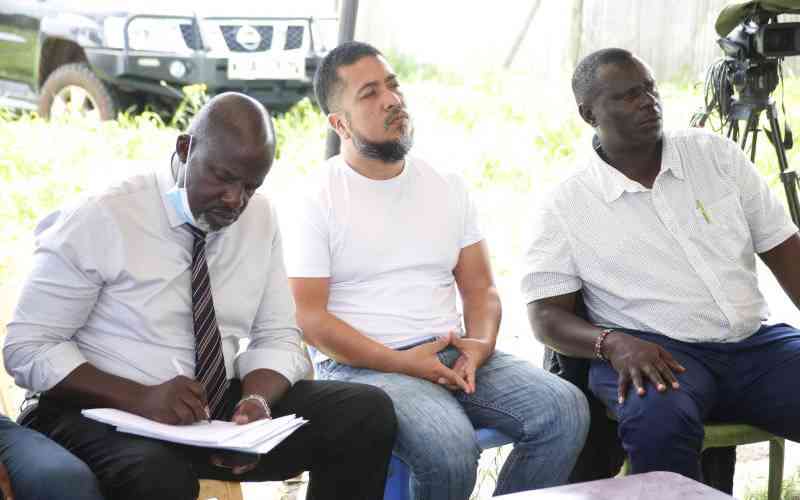
For a 24-year-old, *James does not look anything like his age. His stature and facial structure is that of a much younger person. This is as a result of a rare condition that has completely changed his life.
His childhood was normal, but he noticed that at age 12, while in primary school, when his peers were going through puberty, he was not experiencing any changes.
“I was not immediately alarmed because I thought I was just a late bloomer. When the voices of my friends in high school began breaking, while others grew beards and pubic hair, complete with widened shoulders, I looked like a younger boy. It didn’t help that my voice was extremely high pitched too,” he says.
James still kept hoping that the changes would come at a later date, but they never did. Even upon joining university to study Information and Technology a few years later, his smooth face; devoid of a single beard, would stand out in the sea of strapping young men.
In 2017 James’ life took a turn for the worse.
“I went to bed with a slight headache after work, thinking I was just tired and that the headache would go away after I got some rest. But it didn’t. It got worse.”
It got so bad that James woke up in the morning in so much pain. He could not ignore it any longer.
“I decided that come morning I would go to work and seek permission to go for a check-up,” he says.
But James could not make it to work because he passed out in Nairobi’s CBD at a bus terminus as soon as he got to town. Someone helped him get into a cab and he was rushed to the hospital.
“I also had a very high fever. They did some blood tests and they all came back negative for any infection. Later that evening, my vision started getting blurry too. This is when they ran a meningitis test. The results would be back in six days and I would spend these days at the hospital trying to manage the symptoms.”
The doctors also ordered a cardio test, a kidney exam but these too came back clean. It was only after a bone density test, that the medics noticed something peculiar.
“The results showed that my bones were very porous. I did not have adequate testosterone to help the bones grow. And so I was diagnosed with a condition called severe osteoporosis. They said I had the bones of an 11-year-old. I was 20 then.”
A hormone level test would reveal that indeed his testosterone levels were unusually low. This was the answer to all his stunted growth problems. They had finally found what had been affecting him all his life.
“At first I was diagnosed with Kallmann syndrome - a condition characterised by delayed or absence of puberty and an impaired sense of smell. But they tested my sense of smell and it was present. That is when the diagnosis changed to Idiopathic Hypogonadotropic Hypogonadism (IHH),” he says.
According to Kalman Genga, a rheumatologist, this condition is a family of genetic disorders that are associated with defects in the production and action of a sex steroid called gonadotropin-releasing hormone (GnRH) that controls human reproduction.
IHH is an extremely rare disorder that can be passed down through family due to a defect in the genes.
“It largely affects male patients. Due to its rarity, many people may not be able to recognise that they may have the defective gene. Critical clues include a family history of lack of smell (anosmia), absence of menstrual periods in girls, delayed puberty or the presence of skeletal, renal, or cardiac abnormalities associated with various genetic forms of gonadotropin-releasing hormone [GnRH] deficiency.
To manage the effects of the disease, James was put on supplements to try and correct his bone condition.
“I take Vitamin D and consume lots of milk for my bone health. I was also put on artificial hormones to boost testosterone in my system. I get them via injections and pills. I would prefer to use patches instead of hormone injections because the injections take a toll on the skin.”
James will keep taking hormonal drugs and injections all his life.
“When I stop, my voice goes back to where it was before I began the treatment. The frequency of the drugs and injections I take is determined by the test results, which I get at the clinic every month.”
Going through this journey alone took a toll on James’ mental health, but he has since opened up to his dad. No other family member has this condition.
“He was shocked, but has been very supportive. But I have become a very private person and can’t t seem to interact with my friends the same way I used to four years ago.”
Common signs of IHH
According to Dr Genga, one can suspect presence of the defective gene that causes IHH during:
Neonatal period:
Baby boys can present with
· An abnormally small penis for their age (microphallus).
· One or both testes failing to descend from the abdomen into the scrotum (cryptorchidism)
Newborn girls with IHH have no obvious abnormal reproductive tract findings that might provide clues to the diagnosis.
Childhood period
Since the reproductive hormones are usually silent during this period, majority of the symptoms are of the non-reproductive type. These include:
· Lack of sense of smell in some children
· Skeletal abnormalities, such as cleft lip/cleft palate or hearing deficits
Puberty period
This involves features of delayed puberty. One can say that ppuberty is delayed when physical signs do not appear by age 13 for girls or age 14 for boys.
Girls for example:
· Lack any breast development by age 12
· Have more than five years between initial breast growth and first menstrual period
· Failure to menstruate by age 15
For boys, common signs are:
· Lack of testicular enlargement by age 14
· Lack of pubic hair by age 15
· More than five years for complete adult genital development
Puberty induction treatment
Treatment options depend on the patient’s age and desire to achieve one or more of the following goals:
A patient can have a procedure done to induce puberty or to maintain sexual maturation.
“For women, they can use oestrogen and progestin which maximises breast growth, achieve appropriate skeletal maturation, and induce uterine maturation. For boys we use testosterone which Induces virilization (male characteristics), promotes optimal skeletal maturation (with bone age monitoring), maximises adult height, promotes psychosexual development, builds and sustains normal bone and muscle mass,” Dr Genga explains.
According to the rheumatologist, another procedure done to induce or restore fertility can be done by administering exogenous gonadotropin-releasing hormone (GnRH) will help stimulate follicular development, and ovulation in women and inducing spermatogenesis in men. But these treatments are very expensive and not readily available to the common citizen.
In James case, he had to look for alternative ways of funding since insurance balked.
“Insurance people said that they could not cover preexisting conditions, so I raised cash for clinics, drugs and injections.
*James Maina’s Name has been changed to protect his identity
 The Standard Group Plc is a
multi-media organization with investments in media platforms spanning newspaper
print operations, television, radio broadcasting, digital and online services. The
Standard Group is recognized as a leading multi-media house in Kenya with a key
influence in matters of national and international interest.
The Standard Group Plc is a
multi-media organization with investments in media platforms spanning newspaper
print operations, television, radio broadcasting, digital and online services. The
Standard Group is recognized as a leading multi-media house in Kenya with a key
influence in matters of national and international interest.
 The Standard Group Plc is a
multi-media organization with investments in media platforms spanning newspaper
print operations, television, radio broadcasting, digital and online services. The
Standard Group is recognized as a leading multi-media house in Kenya with a key
influence in matters of national and international interest.
The Standard Group Plc is a
multi-media organization with investments in media platforms spanning newspaper
print operations, television, radio broadcasting, digital and online services. The
Standard Group is recognized as a leading multi-media house in Kenya with a key
influence in matters of national and international interest.






